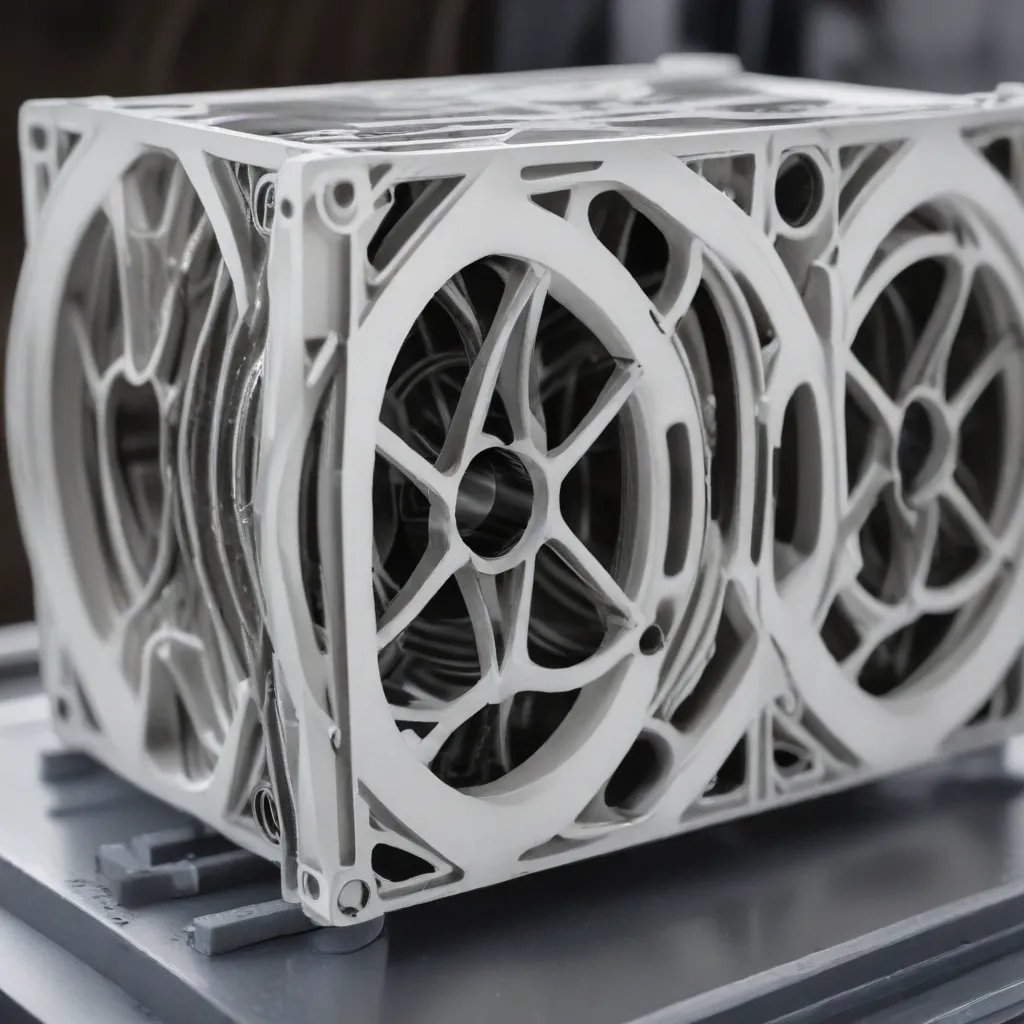
The Evolving World of Heat Exchangers
In the ever-evolving landscape of thermal engineering, heat exchangers remain a crucial component, responsible for efficient heat transfer in a wide array of industries, from HVAC systems to power generation and beyond. As technology advances, engineers and researchers continue to push the boundaries of heat exchanger design and performance, seeking innovative solutions to address global energy challenges and sustainability concerns.
One such innovative approach that has gained significant attention in recent years is the integration of additive manufacturing, more commonly known as 3D printing, into the heat exchanger domain. This transformative technology offers remarkable opportunities to enhance heat transfer, optimize designs, and improve the overall efficiency and sustainability of heat exchanger systems.
Unleashing the Potential of 3D Printing
The rise of 3D printing has revolutionized the way we approach manufacturing, allowing for the creation of complex geometries, customized designs, and the use of advanced materials that were previously impractical or even impossible with traditional fabrication methods. This newfound flexibility has profound implications for the heat exchanger industry, as it opens the door to innovative solutions that can address long-standing challenges.
Designing for Enhanced Heat Transfer
One of the primary advantages of 3D printing in the context of heat exchangers is the ability to design and fabricate intricate, optimized geometries that can significantly improve heat transfer performance. By leveraging the freedom of 3D printing, engineers can create heat exchanger designs with complex internal structures, enhanced surface area, and tailored flow patterns – all of which can lead to tangible improvements in heat transfer efficiency.
The study by Zhang et al. demonstrates the potential of 3D printing in this regard, highlighting the development of heat exchangers with elaborate fin structures and internal flow channels. These customized designs, enabled by additive manufacturing, have been shown to outperform their conventionally manufactured counterparts in terms of heat transfer coefficient and pressure drop characteristics.
Unlocking the Potential of Advanced Materials
In addition to the design flexibility, 3D printing also opens up new avenues for the use of advanced materials in heat exchanger construction. By leveraging the capabilities of additive manufacturing, engineers can incorporate materials with superior thermal properties, such as high-performance alloys, ceramics, or even composite materials, which may not be easily accessible or feasible to implement with traditional manufacturing techniques.
The work by Kuey et al. explores the integration of additive manufacturing and advanced materials, specifically focusing on the fabrication of heat exchangers using high-entropy alloys. These unique alloys, with their exceptional thermal conductivity and corrosion resistance, hold promise for enhancing the overall performance and durability of heat exchanger systems.
Optimizing for Sustainability
One of the driving factors behind the adoption of 3D printing in the heat exchanger domain is the potential for enhanced sustainability. Compared to traditional manufacturing methods, 3D printing can significantly reduce material waste, as it allows for the precise and efficient utilization of raw materials, leading to a more sustainable production process. Additionally, the ability to locally manufacture heat exchanger components can minimize the need for extensive transportation, thereby reducing the associated carbon emissions and energy consumption.
The study by Anwajler highlights the sustainability advantages of leveraging 3D printing for heat exchanger optimization. By designing lightweight yet efficient heat transfer components, the overall energy consumption and environmental impact of heat exchanger systems can be minimized, contributing to the development of more sustainable thermal management solutions.
Challenges and Considerations
While the potential of 3D printing for heat exchanger heat transfer enhancement is undeniable, there are several challenges and considerations that must be addressed to fully realize its benefits.
Manufacturability and Scalability
One of the primary concerns is the scalability and manufacturability of 3D printed heat exchangers. While additive manufacturing offers unparalleled design freedom, the production of large-scale or high-volume heat exchanger components can still pose logistical and economic challenges. Factors such as build volume limitations, printing speed, and material availability must be carefully evaluated to ensure the feasibility of 3D printing for commercial-scale heat exchanger production.
The work by Dede et al. explores these considerations, highlighting the need for advancements in 3D printing technologies, materials, and post-processing methods to address the scalability and manufacturability limitations.
Performance Validation and Optimization
Another critical aspect is the need for comprehensive performance validation and optimization of 3D printed heat exchangers. While the theoretical advantages of customized designs and advanced materials are compelling, it is essential to rigorously test and validate the real-world performance of these heat exchanger systems to ensure they meet or exceed the standards set by traditional manufacturing methods.
Ongoing research and development efforts are focused on developing robust experimental and computational methods to accurately predict, evaluate, and optimize the heat transfer performance of 3D printed heat exchangers, paving the way for their widespread adoption.
The Way Forward
As the heat exchanger industry continues to evolve, the integration of 3D printing technology holds immense promise for enhancing heat transfer performance, improving sustainability, and driving innovation. By leveraging the design freedom, material versatility, and localized manufacturing capabilities of additive manufacturing, engineers and researchers are poised to unlock a new era of thermal management solutions.
However, to fully realize the potential of 3D printing in the heat exchanger domain, concerted efforts are required to address the challenges of scalability, performance validation, and optimization. Continued investment in research, development, and collaborative initiatives between academia, industry, and regulatory bodies will be crucial in overcoming these obstacles and accelerating the adoption of 3D printing for heat exchanger heat transfer enhancement.
The Air Cooled Heat Exchangers website is committed to staying at the forefront of these advancements, providing valuable insights and practical guidance to industry professionals navigating the evolving landscape of thermal engineering. By embracing the transformative power of 3D printing and collaborating to address the challenges ahead, we can collectively contribute to a more sustainable and efficient future for heat exchanger systems.

